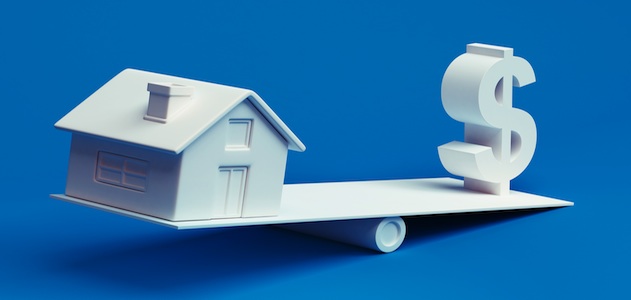Home price reports released this week show solid home price appreciation throughout the summer, but those numbers are expected to subside a bit as the market moderates on economic uncertainty.
The Standard & Poor's Case-Shiller Home Price Indices showed average price growth of 12.8% in August, while CoreLogic’c Case-Shiller Indexes estimated a 10.1% increase in second-quarter home prices.
Both data sets show home prices on the rise even as mortgage rates begin to edge up across the country.
Some of this can be explained by ongoing investor influence and healthy growth year-over-year, Quicken Loans economist Bill Banfield said a day after the S&P data came out.
"What we’re seeing is pretty decent year-over-year double-digit gains," he explained, "but month-over-month, the numbers seem as if they have slowed a little bit."
This slowing occurred in the transition from summer to fall and leading up to a controversial government shutdown that has been blamed for slowing mortgage processing and consumer confidence even further.
Yet, Banfield is not negative on prices cooling off a bit, as long as they maintain an upward trajectory over time.
"It’s a healthier pace in our opinion," he added.
Banfield remembers rates rising in the summer after the Fed announced a possible tapering of mortgage-backed securities. "In the summer, interest rates went up a bit, you had an effective rate close to 5% and we are now at a four-month low on interest rates."
Banfield acknowledged that rising rates in the summer "pulled some of the euphoria out of the purchase market."
But to him, the latest numbers show a healthier real estate market even if it is cooling down a bit.
The CoreLogic Case-Shiller Indexes note that national home prices are 16% above the trough of the recession, while still 24% below peak levels reached in the first quarter of 2006.
CoreLogic also believes price appreciation will decelerate in the second half of 2013 and in the first part of 2014. The research firm says price appreciation overall is expected to slow to an average of 5.4% across most U.S. housing markets.
"Prices are now rising in nearly 90 percent of metro areas, and in all metro areas with populations greater than 1 million," said Dr. David Stiff, principal economist for CoreLogic Case-Shiller. "The strongest growth continues to be recorded in cities that were at the center of the housing bubble, but investor demand in those markets appears to be waning, meaning rapid rates of price appreciation are likely unsustainable."
Steering clear of a housing bubble is a positive development, and that's what this cooling-off period suggests to some economists.
"The momentum has slowed, but it’s actually healthier," said Banfield. "If this trend continues, you will see home prices continue to go up at a slower pace. Ultimately, I think that is better."
He doesn’t see the market nearing a bubble, since the price declines month-over-month show some signs of moderation.
Going forward, Banfield sees the market coming back slowly, with year-over-year price growth receding back to the single-digits and month-over-month growth remaining modest.
He acknowledges that in the midst of price growth, the market is still seeing high concentrations of investors. "They are finding an opportunity to buy homes at lower prices, and then renting them out or rehabbing them," he explained.
Still, CoreLogic’s second-quarter report notes that first-time and trade-up buyers are growing even as tight mortgage lending conditions slow demand within that segment.
Demand from investors – while still there – is starting to weaken, CoreLogic said. The reason for this is the profit incentive is declining with fewer homes listed at attractive prices.
Yet, CoreLogic believes the market is contained enough to ward off bubble risk or steep price losses.
"Combined with increased housing construction, expected increases in existing inventories should restrain price appreciation even if demand remains strong. Nevertheless, the rate of home price growth in the coming months will remain above its long-term average of 4.5% annual appreciation since 1975," said Dr. Stiff.





